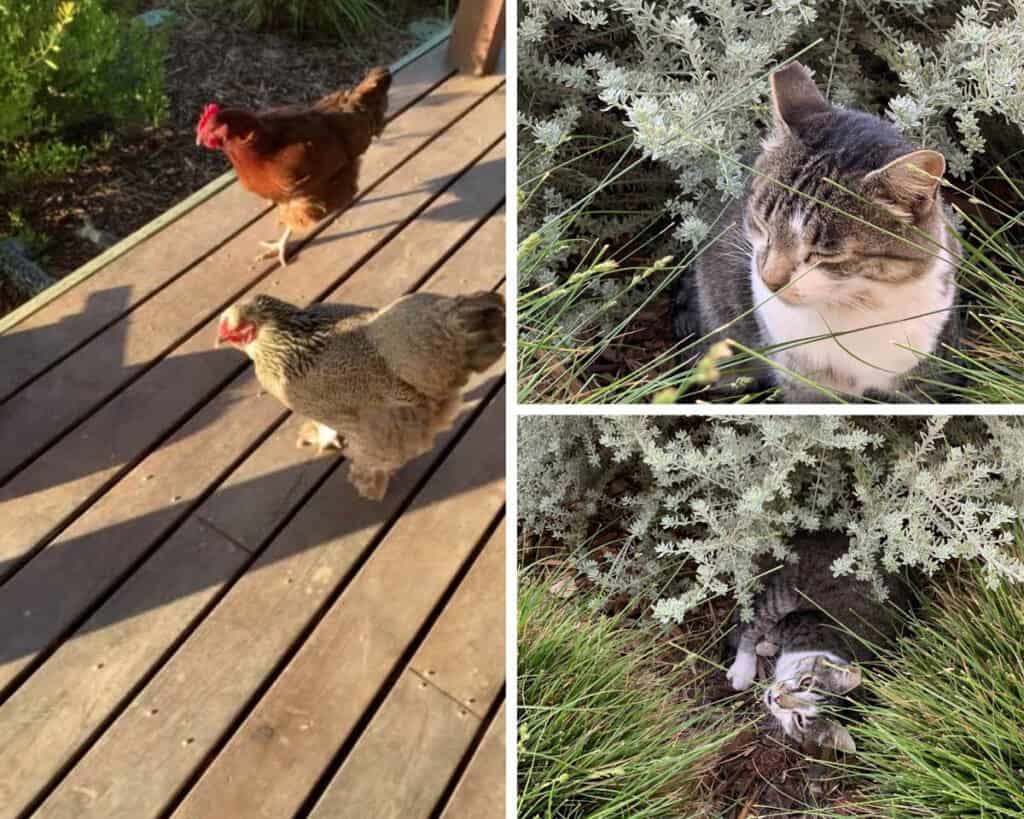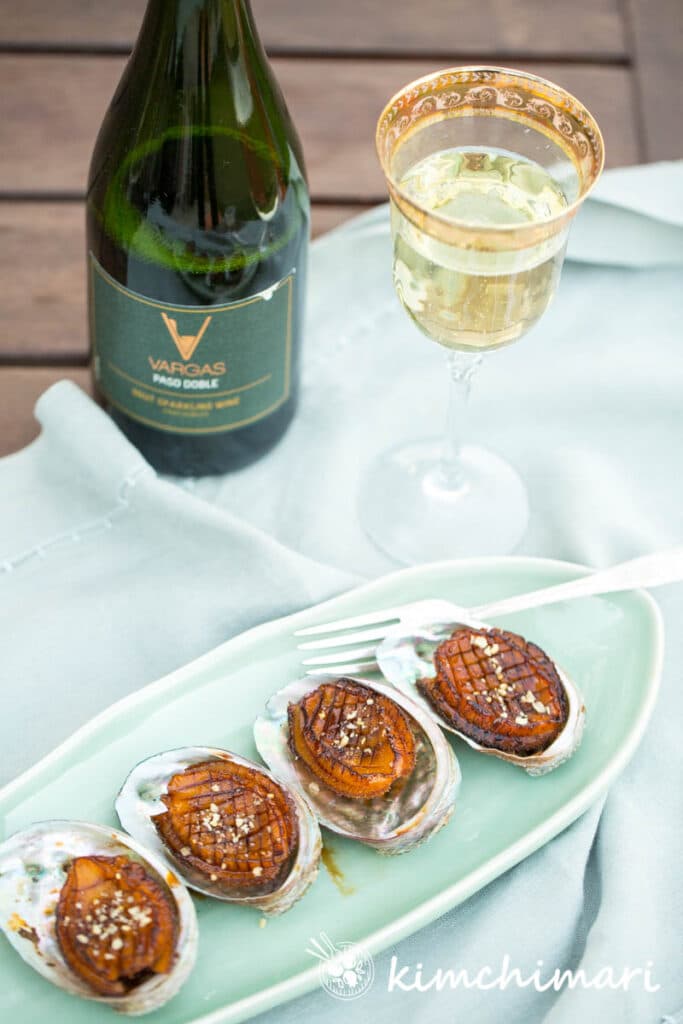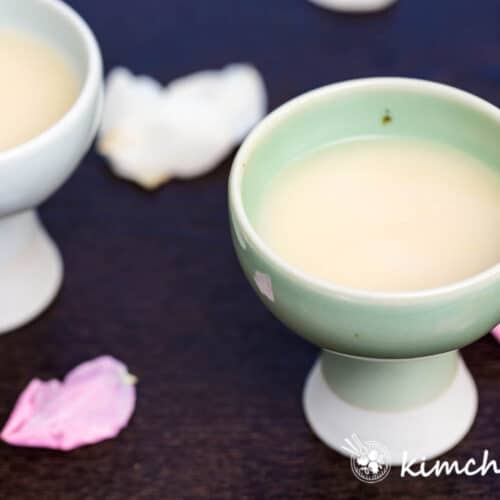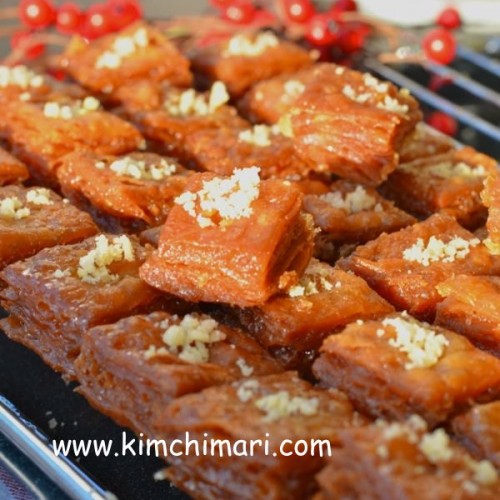UPDATE – Sadly, as of April 2024, the Vino Vargas Winery is now closed. Pedro and Vicky, as much as they soo enjoyed making wines and sharing them, decided to retire and enjoy life outside of wine making. I will totally miss winery sitting for them but am so happy for them and respect the decision they made!
Are you ready for something unbelievable?? You know that I always love to improve a recipe and being a scientist in my previous life, I love to nail down things so that the recipe minimizes the chance of failure. So, a dream of mine was to work with a real master in making my current Makgeolli recipe better (if possible) or at least learn more so that I can help my readers have better success.
I also wanted to see if I can find a way to produce a more fizzy sparkling Makgeolli because I just love fizzy, bubbly drinks! Like this video below! 😝
BTW, if you don’t know what Makgeolli is or if you are curious about the contents of Makgeolli, you can read more in my Ultimate Guide to Makgeolli (its taste and content) post. Because there’s still so much information for me to analyze and also I wanted to do another round of experiments before I share my conclusions, this post will only talk about my project goals and a description of my first round of experiments
So… and as you may know, I have become friends in recent years with a wonderful winery owner couple Vicky and Pedro Vargas of Vino Vargas Winery in Paso Robles, California. They are the sweetest couple you would ever meet and they make amazing wines that are just one of my favorite wines to pair with food!!
And in my typical, camera-shy fashion, I forgot to take a picture with Pedro! I’m so sad but believe me, I was there!!

In addition to the fact that they have a super cute barn cat named Boots and two very hungry, beautiful chickens named Sassy and Ginger! And yes, Sassy definitely has an attitude.

Well… I asked the amazing award-winning winemaker Pedro Vargas if he would be able to help me out. And would you believe he said YES??!!! 😲🙀 I still can’t believe it.. I am just sooo honored!! So I visited the beautiful Vino Vargas winery – talked to Pedro about what I know about Makgeolli, having them actually taste some commercial ones with some...Pajeon of course and they both enjoyed it!
And then I learned from him how he approaches a new wine.. it’s so amazing to learn what goes in the mind of a winemaker.. btw, did you know that different strains of yeast are used to bring out different fragrances and flavors from grapes to make wines? And so Pedro thought that we could apply some of the same methods here.
Wow.. what a concept!!
BTW, if you are ever near the Paso Robles area, you should NOT miss visiting and tasting Vino Vargas wines. And I’m not saying this because they are my friends nor is it because they are helping me with this project, I signed up for their wine membership BEFORE we even became friends. I really honestly feel that they really have wonderfully delicious, approachable (and affordable) European-style wines. I especially love their sparkling wines with Korean BBQs and Rosé with spicy Korean foods! More about wine pairing with Korean foods later in the post.
What is my Makgeolli project about?
For years I have received countless questions from people about my Makgeolli recipe and while almost all of them were about how they were successful in making Makgeolli at home with my recipe, I have had a few who had issues and I have been wanting to approach the recipe in a more scientific way with more definite data such as the exact alcohol and sugar content and more.
In short, I wanted to find answers to the following questions –
- What affects the success of Makgeolli the most? Why does it fail?
- What changes can I make to improve my current recipe more in terms of consistency?
- Is the 3-layer test or the # of days a good reliable test to determine if the Makgeolli is ready? Are there other signs or tests that can tell us when it is ready?
- What happens if you let it go further than 10 days?
- How much alcohol and sugar content can a home-made Makgeolli usually have? How does it change over time?
- How can you make a more fizzy Makgeolli?
PLEASE feel free to send me email, comment here or on my social media if you have other questions that you want me to explore.
My Makgeolli EXPERIMENTS
On January 22rd, (2022), I made 3 batches of Makgeoll. We continued to ferment for about a month (34 days) and we measured the brix at the beginning, during (although not sure how accurate) and then when it was fully fermented, Pedro will measure the brix and alcohol level by sending it to a lab!! (Wow my Makgeolli is getting a special treatment!!
Makgeolli A – my recipe (Nuruk Only)
Makgeolli Y – my recipe + 1 tsp baker’s yeast
Makgeolli VV – Makgeolli J1 + 1 tsp wine yeast (at Pedro’s suggestion)
For the 3rd one (VV for Vino Vargas), Pedro suggested using a strain of dry wine yeast that he likes to use for wines along with Nuruk. He also suggested that we try fermenting fully all the way to the end when most of the sugars would have converted alcohol at which point, you have a more accurate way of measuring alcohol.
Things I learned ALREADY!
- Through Pedro, I learned that it’s actually very hard to measure the amount of alcohol accurately during fermentation unless you send it to a lab because the instruments that you can get can’t accurately measure both. What you can usually do is measure the BRIX (sugar level) at the beginning to calculate the potential alcohol level were it to fully ferment and then the end result can be sent to the lab for the most accurate alcohol numbers.
Apparently, the home test kits for measuring sugar are no longer really accurate when there’s the presence of alcohol in the drink. And I have indeed experienced that when I measured it with my simple refractometer. Even though days have passed, the Brix level was the same. Also because the refractometer used the light and makgeolli is a cloudy liquid, I think it must also get in the way.
- I also learned that baker’s yeast is not the best for brewing if you want to get a higher alcohol content Makgeolli. Baker’s yeast will start to die off when alcohol reaches about 9-10% according to this source but I know Makgeolli can be much higher than that.
- Adding additional yeast (baker’s yeast or wine yeast) to Nuruk definitely speeds up the fermentation and depending on the type of yeast, you may end up with different levels of alcohol and flavor.
THANK YOU Vino Vargas Wines!
I really want to thank Pedro and Vicky for all their support, help and guidance throughout this project. I never imagined in my wildest dreams that Pedro would do all of this for me – you are just an amazingly kind person and a fantastic winemaker! And maybe now you may become a Makgeolli maker?!! Haha..
And here’s what Pedro wanted to say about our Makgeolli Vargas Project –
“Over the years I have made many types of wines, including more recently sparkling wine. Although I enjoy sake and other similar drinks, I never thought of making any. That is until our good friend JinJoo Lee came to visit with some batches of Korean Makgeolli. JinJoo is an excellent chef and well-known food blogger and wanted to see if I was interested in working with her to refine her Makgeolli recipe. I said yes before I even tasted the Makgeolli, but was for sure convinced after we sampled some store bought Makgeolli. The taste is unique and slightly similar to sake, but for me there was a very familiar taste of a rice drink made in Mexico called Horchata.
In similar manner to when I research a new wine, I decided to understand the basics of Makgeolli starting with the differences between this rice-based drink and wine, which is a grape based beverage. One huge difference is that when grapes mature, they contain quantities of glucose and fructose which is easily fermentable by yeast. Rice on the other hand is a grain that contains starches that have been stored as part of the plant metabolic process. This starch must be broken down into fermentable sugar before any type of fermentation can take place.
And so, my latest experimental journey has started. This time I have a great partner in JinJoo! Together we are going to figure out how to make an even better Makgeolli.
Stay tuned!”
Pedro Vargas
BTW, if you are ever interested in learning about how Champagnes are made, Pedro recently released his 2nd edition of his Stars in a Glass : Making Méthode Champenois Sparkling Wine. I LOVE LOVE his champagnes (because it’s much less acidic than most and is made with classic french techniques) so I know the book is going to be excellent! I will definitely be buying one!
As I said above, if you want to try some really good well-balanced wines to pair with your foods, you have to try Vino Vargas wines.
Favorite Korean Food and Wine Pairings
Spicy Korean foods (especially with Gochujang) – A nice rosé is the perfect pairing for this. Pedro, Vicky, my husband and I tried the rose with some gochujang dip and we all agreed it magically goes well with it. Certainly, stands up to the strong gochujang salty and spicy flavor and creates a lovely pairing! Here’s are my recipes that use Gochujang.
Oysters, caviar, abalone, bbq pork ribs and other spicy Korean foods – A Perfectly crisp, flavorful but not sour champagne will pair well with some soy glazed abalone like I did here and it was fantastic!
Bulgogi or Kalbi – Grenache or a red blend that tastes similar to Pinot Noir both pair really well with the classic Korean bulgogi flavors. Grenache is a soft and velvety red with berries and plum notes with a silky finish. One GSM blend that Vino Vargas had was a full bodied red blend of Grenache, Syrah, Mourvedre grapes that has a wonderful raspberry and floral notes with a very smooth finish.

Well, I hope you are as excited as I am about my Makgeolli project and PLEASE feel free to send me email, comment here or on my social media if you have other questions that you want me to explore!
Until my next Makgeolli post!
Take care XOXO ❤️
JinJoo



















Leave a Review